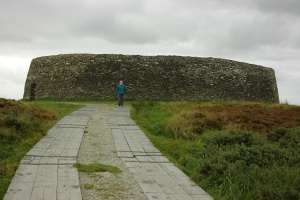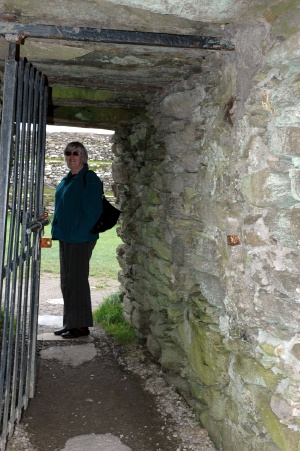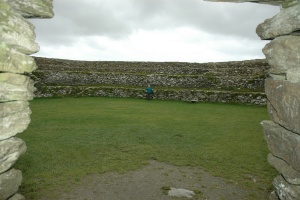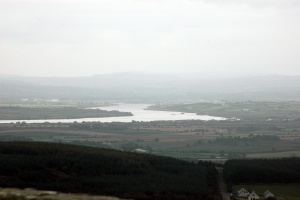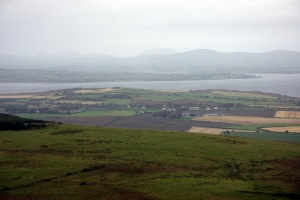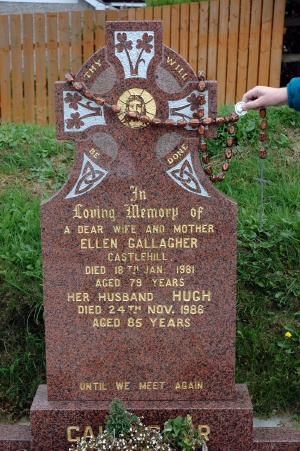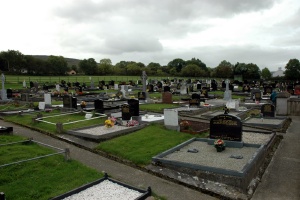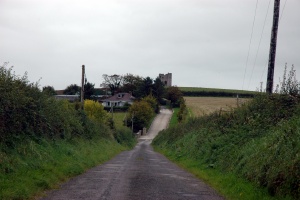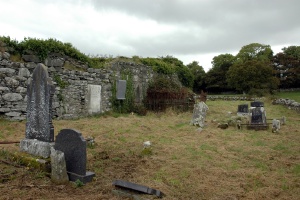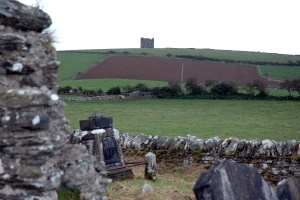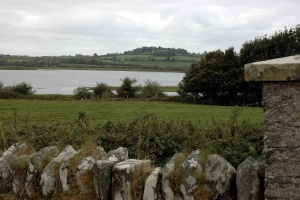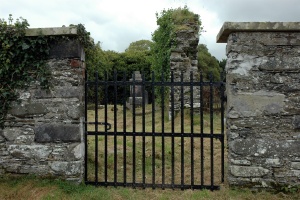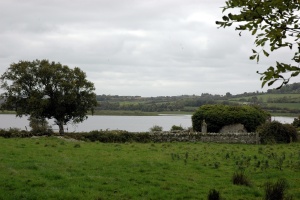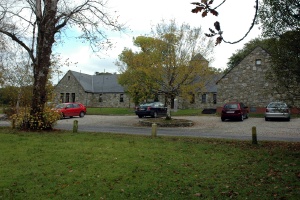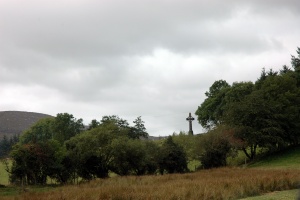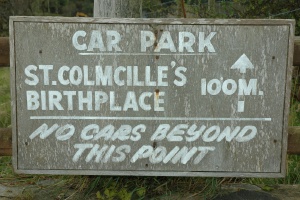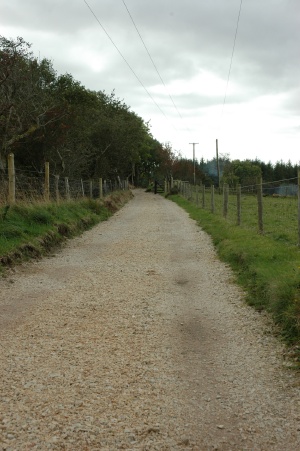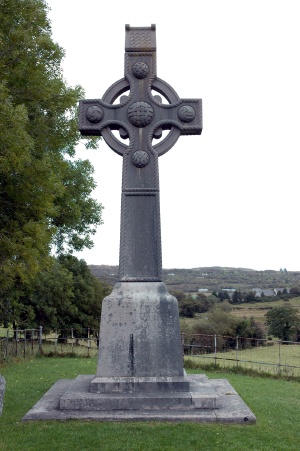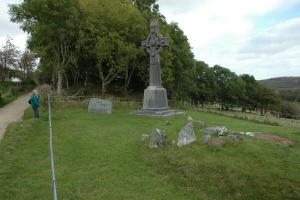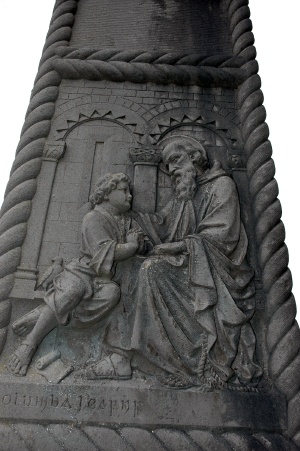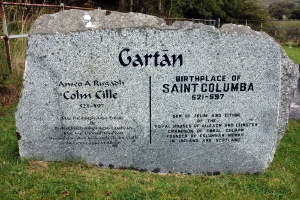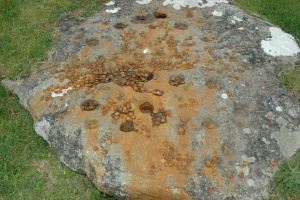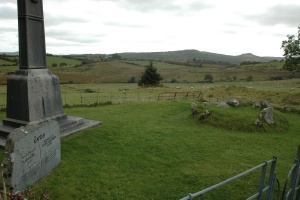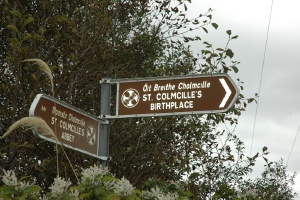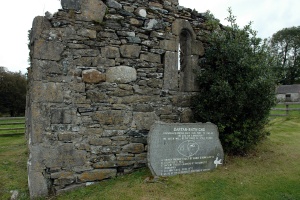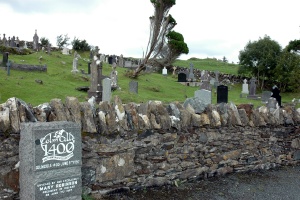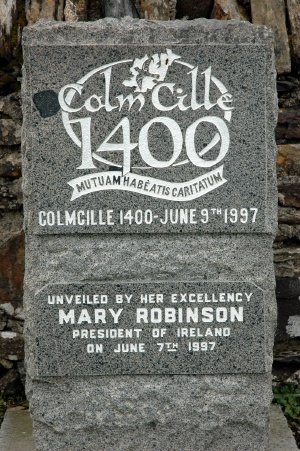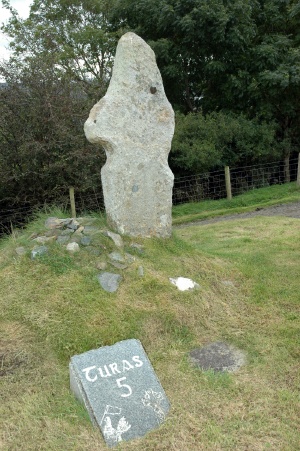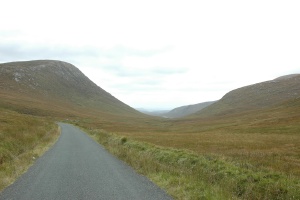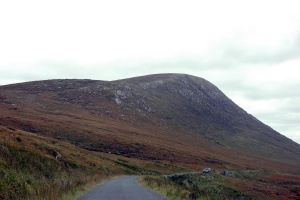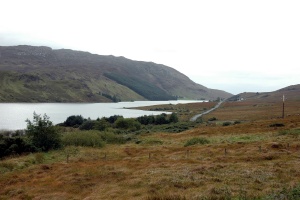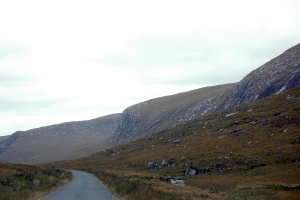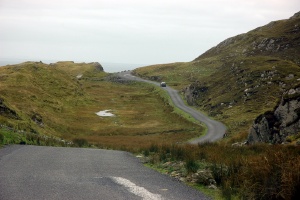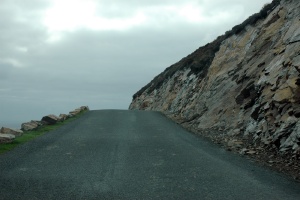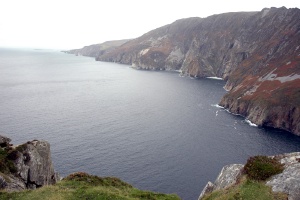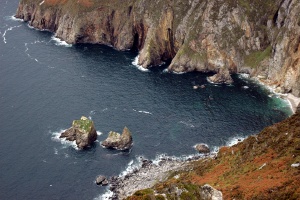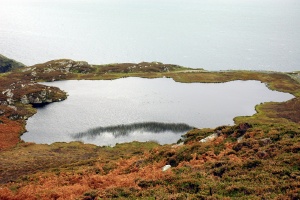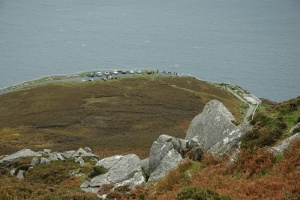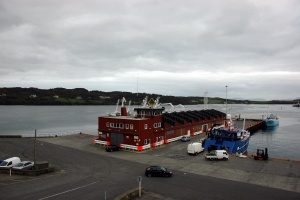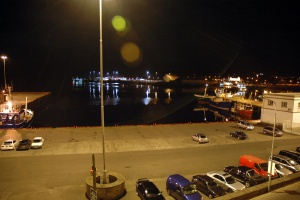Britain 09 - Day 13IntroductionToday we headed west, past Londonderry, through St Columba country, out to the cliffs at Slieve League and on to Killybegs. Grianan AillighAfter passing over the border and back into the Republic, where petrol is in Euro and cheaper than in Pounds, our first visit was to the hilltop fort of Grianan. This stone structure is about 2,000 years old, but was substantially rebuilt in about 1870. The view from the fort covers a 360° circle across Loughs Foyle and Swilly. But there was another reason for visiting this site. Below the hill, towards the north lies the small locality of Castle Hill. This is likely to be the place that Sarah Gallagher left to go first to London and then on to Sydney, where a few months later she married Martin Moroney, from County Clare.
Cemetery at BurtBeside the main road, below Grianan, lies the local cemetery. As it is the closest one to Castle Hill, we stopped here to look for Gallagher graves. This is a well tended cemetery, with an amazing array of large stone headstones. We found several Gallagher headstones, including one from Castle Hill, that may - or may not - be a distant relative.
Sarah Gallagher from Castle HillOn her marriage and death certificates, Sarah Gallagher, wife of Martin Moroney, is shown as coming from Castle Hill, County Derry, Ireland. The only location of that name that we can find is the area to the north of Grianan, on the shore of Lough Swilly, looking across to Inch Island. From Grianan, and the Cemetery, we followed the narrow local roads to the ruins of a small church at Castle Hill. Although there are some headstones still standing, and more were visible amojgst the newly-cut grass and weeds, none were for a Gallagher. This is not surprising, as the Gallagher family was likely to have been farm labourers. Sarah was a shown as a domestic servant on the 1881 census in London.
St Columba Centre and BirthplaceA short drive SW of Castle Hill lies Lough Gartan and the St Columba Centre. We visited this in high expectation, having followed the travels of St Columba through much of Ireland and over the seas to Iona on our visit there in 2003. Much to our disappointment the centre was closed.
St Columba's AbbeyThis site is the remains of yet another of St Columba'sabbeys.
Slieve League Mountains and CliffsFrom Lough Gartan we headed south on the R254 past the Glendowan Mountains to Glenties and Ardara. We then turned west on the R230 for Glencolumbcille. Unfortunately we were confused by roadworks at Meenaneary so headed south instead of west, but this still took us to Carrick. The west coast of Ireland faces the Atlantic, and many parts of the coast are dominated by cliffs. Those at Carrigan Head on Slieve League are the highest in Ireland, and possibly the highest in Europe. The road west winds across the peninsula, then climbs steeply to the vantage point overlooking the cliffs. From here there is a magnificent view west across the cliffs.
The Port of KillybegsWe stayed overnight at the small fishing port of Killybegs. The only hotel of note in the town is the Tara Hotel, on the waterfront, opposite the wharf. We found the hotel to be comfortable and quiet. The rooms facing the port have small balconies, and a superb view. They also had good Internet access, although the first room we were allocated was one of the few where the Internet did not work. We were quickly given another room - by early October the hotel was not very busy. Nor was the restaurant, where we were impressed with the food.
Back to previous day Last updated: 16/06/2017 |


